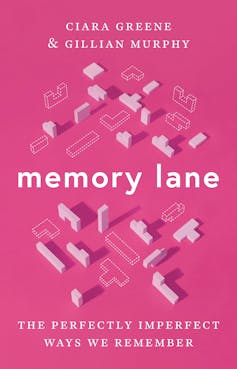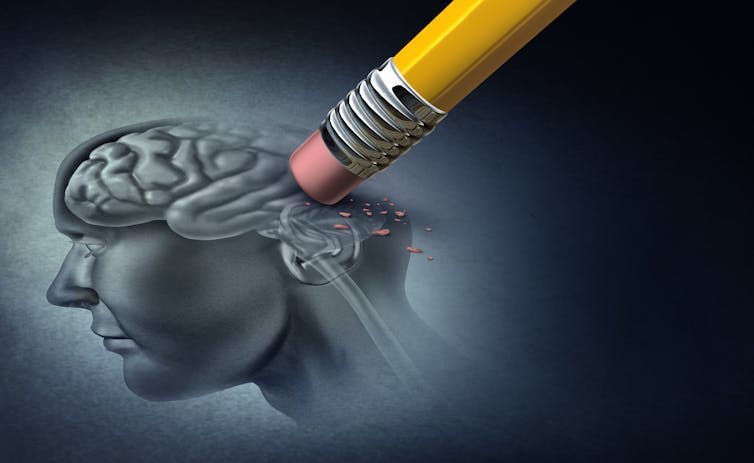Milan Kundera opens his novel The Book of Laughter and Forgetting with a scene from the winter of 1948. Klement Gottwald, leader of the Communist Party of Czechoslovakia, is giving a speech to the masses from a palace balcony, surrounded by fellow party members. Comrade Vladimir Clementis thoughtfully places his fur hat on Gottwald’s bare head; the hat then features in an iconic photograph.
Four years later, Clementis is found guilty of being a bourgeois nationalist and hanged. His ashes are strewn on a Prague street. The propaganda section of the party removes him from written history and erases him from the photograph.
“Nothing remains of Clementis,” writes Kundera, “but the fur hat on Gottwald’s head.”
Review: Memory Lane: The Perfectly Imperfect Ways We Remember – Ciara Greene & Gillian Murphy (Princeton University Press)
Efforts to enforce political forgetting are often associated with totalitarian regimes. The state endeavours to control not only its citizens, but also the past. To create a narrative that glorifies the present and idealises the future, history must be rewritten or even completely obliterated.
In a famous article on “the totalitarian ego”, the social psychologist Anthony Greenwald argued that individual selves operate in the same way. We deploy an array of cognitive biases to maintain a sense of control, and to shape and reshape our personal history. We distort the present and fabricate the past to ensure we remain the heroes of our life narratives.
Likening the individual to a destructive political system might sound extreme, but it has an element of truth. Memory Lane, a new book by Irish psychology researchers Ciara Greene and Gillian Murphy, shows how autobiographical memory has a capacity to rewrite history that is almost Stalinesque.
There is no shortage of books on memory, from self-help guides for the anxiously ageing to scholarly works of history. Memory Lane is distinctive for taking the standpoint of applied cognitive psychology. Emphasising how memory functions in everyday life, Greene and Murphy explore the processes of memory and the influences that shape them.
What memory is not
The key message of the book is that the memory system is not a recording device. We may be tempted to see memory as a vault where past experience is faithfully preserved, but in fact it is fundamentally reconstructive.
Memories are constantly revised in acts of recollection. They change in predictable ways over time, moulded by new information, our prior beliefs and current emotions, other people’s versions of events, or an interviewer’s leading questions.

According to Greene and Murphy’s preferred analogy, memory is like a Lego tower. A memory is initially constructed from a set of elements, but over time some will be lost as the structure simplifies to preserve the gist of the event. Elements may also be added as new information is incorporated and the memory is refashioned to align with the person’s beliefs and expectations.
The malleability of memory might look like a weakness, especially by comparison to digital records. Memory Lane presents it as a strength. Humans did not evolve to log objective truths for posterity, but to operate flexibly in a complex and changing world.
From an adaptive standpoint, the past only matters insofar as it helps us function in the present. Our knowledge should be updated by new information. We should assimilate experiences to already learned patterns. And we should be tuned to our social environment, rather than insulated from it.
“If all our memories existed in some kind of mental quarantine, separate from the rest of our knowledge and experiences,” the authors write, “it would be like using a slow, inefficient computer program that could only show you one file at a time, never drawing connections or updating incorrect impressions.”
Simplifying and discarding memories is also beneficial because our cognitive capacity is limited. It is better to filter out what matters from the deluge of past experiences than to be overwhelmed with irrelevancies. Greene and Murphy present the case of a woman with exceptional autobiographical memory, who is plagued by the triggering of obsolete memories.
Forgetting doesn’t merely de-clutter memory; it also serves emotional ends. Selectively deleting unpleasant memories increases happiness. Sanding off out-of-character experiences fosters a clear and stable sense of self.
“Hindsight bias” boosts this feeling of personal continuity by bringing our recollections into line with our current beliefs. Revisionist history it may be, but it is carried out in the service of personal identity.

Shutterstock
Eyewitness memories and misinformation
Memory Lane pays special attention to situations in which memory errors have serious consequences, such as eyewitness testimony. Innocent people can be convicted on the basis of inaccurate eyewitness identifications. An array of biases make these more likely and they are especially common in interracial contexts.
Recollections can also be influenced by the testimony of other witnesses, and even by the language used during questioning. In a classic study, participants who viewed videos of car accidents estimated the car’s speed as substantially faster when the cars were described as having “smashed” rather than “contacted”. These distortions are not temporary: new information overwrites and overrides the original memory.
Misinformation works in a similar way and with equally dire consequences, such as vaccination avoidance.





